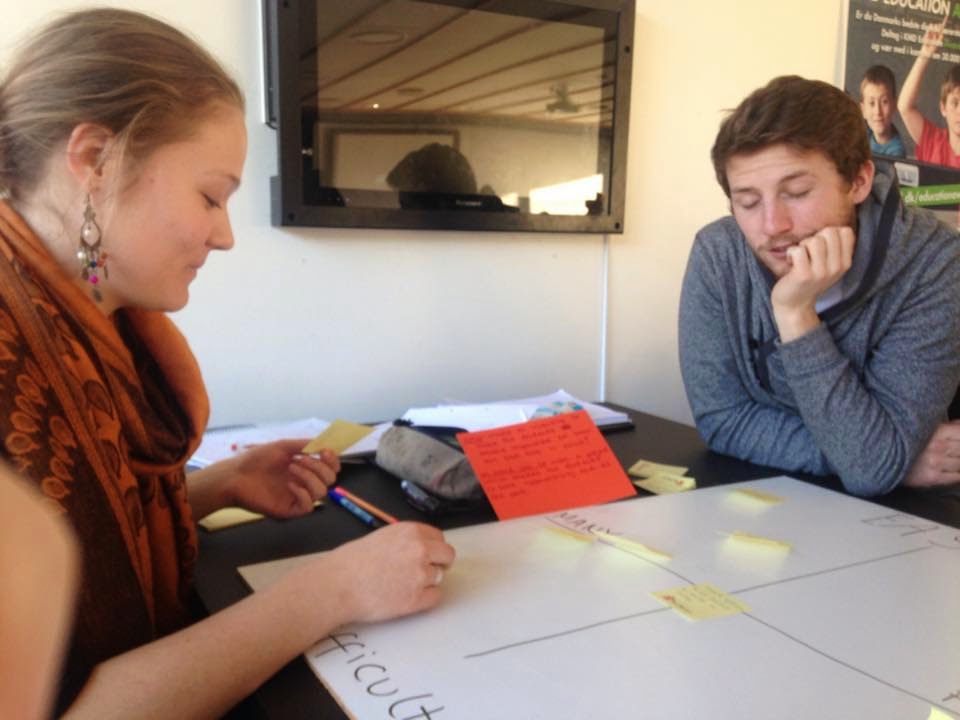Our handbook was compiled together from feedback our group received during the peer evaluation. We thought this was a good suggestion as we realised on reflection that it was necessary for teachers to have a suggested template and guidance to follow in order to visualise our concept but also to facilitate and implement in their classes. We worked very hard on this handbook making sure that it was simple, straightforward and easy to read but also included the main ideas and thoughts behind our concept. Below you will find some pictures of some of the pages we included in our handbook!
 |
| Images from our Handbook |
 |
| Example of what we included in our Handbook |
After this week it was time to begin phase 5 of the innovative design thinking process which involve the evolution, delivery and evaluation of our concepts. Originally we had thought we would be presenting our ideas to teacher however we were pleasantly surprised that some older and younger pupils would be coming to hear our presentation so as a group we had to quickly improvise our presentations to suit a younger audience. This clearly showed how well we worked together as a team because we were able to quickly think on our feet and adapt to the situation.
Feedback from the students was very positive which was very encouraging to hear as our concept was directed towards and involved students themselves. Many students commented on how they liked the idea of collaborating with the younger pupils in the school as this was something they had not done before in class. They also liked the idea of creating a campaign in whatever format they liked (we had chose to leave this up to the pupils specifically as we wanted to create an environment which encouraged the pupils to be innovative themselves!). Likewise, another common feedback was that and the competitive element behind it but that all groups would receive recognition for their campaigns and contributions through awards for the best teamwork or the most progress etc.
After presenting to the pupils we also got the opportunity to present to teachers as well. Feedback from these presentations was also very positive and teachers commented on how much they liked that our concept specifically was a realistic concept and could be easily implemented and used in their school without needing extra money, resources or time. Likewise all teachers looked favourably at our handbook and saw it as an invaluable tool for implementing our concept in practice.
Overall, it was very rewarding to be able to deliver our innovative concepts to both the teachers and pupils after all the hours of planning and preparation we had put into it. It was also very encouraging to see how excited and positive they were about our concept and this shows that as a group we were successful in understanding our consumers and what they needed which goes to show that the information we had gathered during the discovery phase was very worthwhile and beneficial.
Once we had finished all our presentations and given our final presentation to our class we then evaluated our innovation concepts as a group using the Darsø model. We concluded that for this project we worked more with our knowledge, relations and concepts and less with our ignorance however this may be an area we could use more of in the future if we were to do a similar project to this again. Indeed it would be interesting to see what ideas would turn out if we used more ignorance!
Although this is the end of this part of the innovation process I am excited to start working on teaching children now to become innovative!








